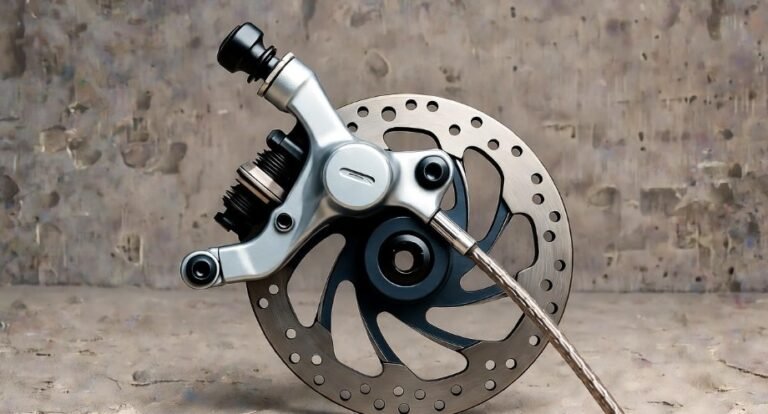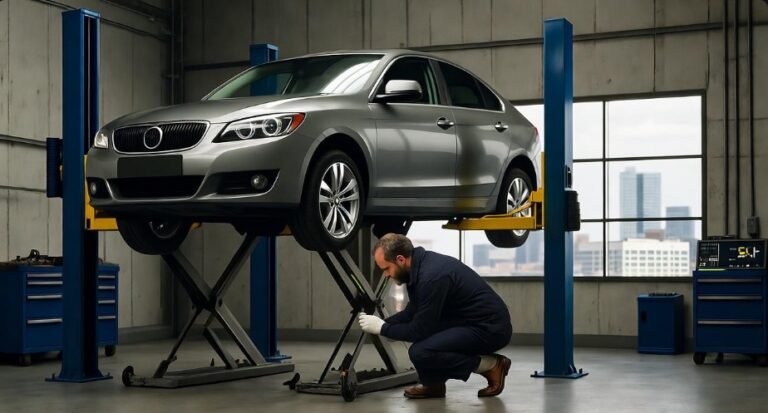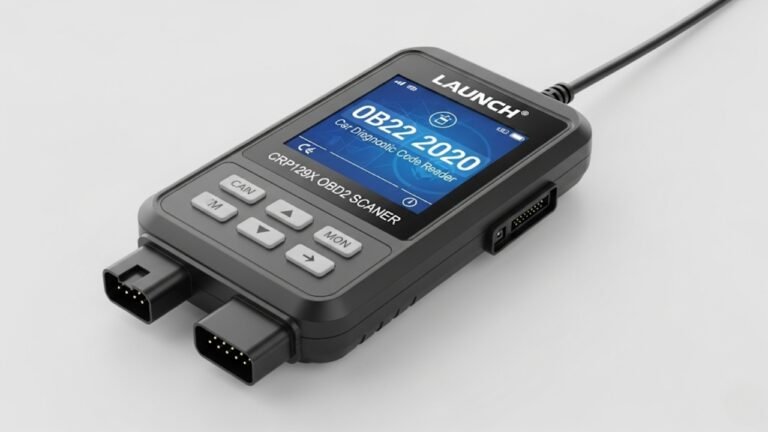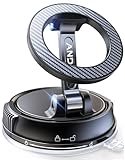Disc Brake & Drum Brake Difference: Key Insights
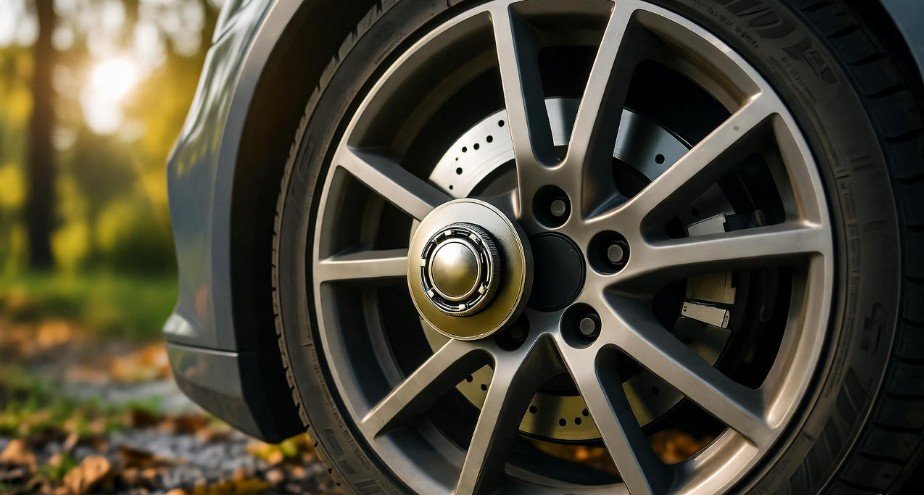
Disc brakes and drum brakes are the two primary types of braking systems used in vehicles. Understanding the disc brake and drum brake difference is crucial for any car owner as it directly impacts your vehicle’s safety and performance. This guide will break down their mechanics, pros, cons, and how to identify which system your car uses, empowering you to make informed decisions about your vehicle’s maintenance.
Key Takeaways
- Disc brakes offer superior stopping power and heat dissipation.
- Drum brakes are more cost-effective and require less maintenance.
- Modern cars predominantly use disc brakes on the front wheels.
- Understanding the differences aids in vehicle maintenance and safety.
- Proper brake care ensures reliable stopping power in all conditions.
- Inspect your brakes regularly for optimal performance.
You rely on your car’s brakes every single day. They are perhaps the most critical safety feature in your vehicle, silently working to bring you to a safe stop. But have you ever wondered about the technology behind that powerful stopping force? You’ve likely heard terms like “disc brakes” and “drum brakes,” and you might be curious about how they work and why your car might have one, or even a combination of both. Understanding the disc brake and drum brake difference isn’t just for mechanics; it’s essential knowledge for every driver. Don’t worry if it sounds complicated – we’re here to simplify it for you. We’ll walk through the fundamentals of each system, highlight their unique advantages and disadvantages, and help you identify what’s on your car. Let’s dive into the heart of your vehicle’s stopping power.
Understanding Automotive Braking Systems
Before we delve into the specifics of disc and drum brakes, let’s briefly touch on the core principle of how any braking system works. When you press the brake pedal, you initiate a chain reaction. This action typically involves hydraulic fluid being pushed through lines to activate a mechanism at each wheel. This mechanism then creates friction, which slows down the rotation of the wheel, and thus, your vehicle. The way this friction is generated is where the difference between disc and drum brakes lies.
What Are Disc Brakes?
Disc brakes are a more modern and generally more effective braking system. Picture a large metal disc, similar to a vinyl record, attached to your wheel hub. When you brake, a component called a caliper, which houses brake pads, squeezes this rotating disc. This squeezing action creates friction, slowing the disc and, consequently, the wheel.
How Disc Brakes Work: A Step-by-Step Breakdown
- Pedal Application: You press the brake pedal.
- Master Cylinder Activation: This action pushes brake fluid from the master cylinder through brake lines.
- Caliper Engagement: The pressurized fluid reaches the caliper at the wheel.
- Piston Movement: Inside the caliper, pistons are forced outward.
- Pad Squeeze: These pistons push the brake pads firmly against the brake rotor (the disc).
- Friction and Stopping: The friction between the pads and the rotor generates heat and slows the wheel’s rotation, bringing your vehicle to a halt.
Components of a Disc Brake System
- Brake Rotor (Disc): A metal disc that rotates with the wheel. They can be solid or vented (with internal passages) to help dissipate heat.
- Brake Caliper: A clamp-like device that houses the brake pads and pistons. It straddles the rotor.
- Brake Pads: Friction material that is pressed against the rotor by the caliper pistons.
- Brake Fluid: Hydraulic fluid that transmits the force from the brake pedal to the caliper pistons.
- Wheel Cylinder/Slave Cylinder: Primarily found in drum brakes, but the caliper often contains pistons that act similarly in disc brakes.
Pros of Disc Brakes
- Superior Stopping Power: Generally provide more consistent and powerful braking, especially under heavy use.
- Excellent Heat Dissipation: The exposed rotor design allows heat to escape more easily, reducing the risk of “brake fade” (a loss of braking effectiveness due to overheating).
- Better Performance in Wet Conditions: Water is more effectively “squeezed” off the rotor by the pads, leading to more reliable braking in rain.
- Easier Inspection and Maintenance: Brake pads are often visible through the wheel spokes, making it simpler to check their wear.
- Self-Adjusting: As brake pads wear down, the caliper mechanism automatically adjusts, ensuring consistent pedal feel.
Cons of Disc Brakes
- Higher Cost: Typically more expensive to manufacture and replace than drum brakes.
- More Exposure to Road Debris: The open design can expose components to dirt, dust, and salt, potentially leading to faster wear or corrosion in harsh environments.
- Can Be Noisier: Some disc brake systems can be more prone to squealing or grinding noises.
What Are Drum Brakes?
Drum brakes work on a completely different principle. Instead of a disc, imagine a cylindrical drum that rotates with the wheel. Inside this drum, two curved brake shoes are positioned. When you brake, these shoes are pushed outward against the inner surface of the rotating drum, creating friction to slow the wheel.
How Drum Brakes Work: A Step-by-Step Explanation
- Pedal Application: You apply pressure to the brake pedal.
- Master Cylinder Activation: This action forces brake fluid through the brake lines.
- Wheel Cylinder Pressure: The fluid pressure reaches a wheel cylinder located inside the drum assembly.
- Piston Extension: The fluid pushes pistons outward within the wheel cylinder.
- Shoe Actuation: These pistons force the brake shoes to expand and press against the inner surface of the brake drum.
- Friction and Stopping: The friction between the shoes and the drum slows the wheel and stops your vehicle.
Components of a Drum Brake System
- Brake Drum: A hollow, cylindrical metal casting that rotates with the wheel.
- Brake Shoes: Curved metal structures with a friction lining attached to them.
- Wheel Cylinder: A small hydraulic cylinder containing pistons that push the brake shoes outward.
- Springs and Retractors: A system of springs that pull the brake shoes back to their resting position when the brake pedal is released.
- Adjuster: A mechanism that ensures the brake shoes remain close to the drum as they wear down, maintaining proper clearance.
Pros of Drum Brakes
- Cost-Effective: Generally cheaper to manufacture and replace than disc brakes.
- Durability and Protection: The enclosed design offers better protection from road dust, water, and debris, potentially leading to a longer lifespan in some conditions.
- Effective Parking Brake Integration: Drum brakes are often used in conjunction with a parking brake mechanism, which can be more robustly integrated into the drum assembly.
- Self-Energizing: In some drum brake designs, the rotation of the drum helps to press the shoes more firmly against it, enhancing braking force without requiring a stronger pedal push.
Cons of Drum Brakes
- Inferior Heat Dissipation: The enclosed drum traps heat, making them more susceptible to brake fade during prolonged or heavy braking.
- Reduced Wet Weather Performance: Water can get trapped inside the drum, significantly reducing braking effectiveness until it dries.
- More Complex Maintenance: Inspection and repair can be more involved as the entire drum often needs to be removed to access the shoes and other components.
- Can Be Less Responsive: May require more pedal pressure or take longer to engage fully compared to disc brakes.
Disc Brake and Drum Brake Difference: A Comparative Look
To truly grasp the disc brake and drum brake difference, let’s lay out their key distinctions side-by-side.
| Feature | Disc Brakes | Drum Brakes |
|---|---|---|
| Mechanism | Pads squeeze a rotating disc (rotor). | Shoes are pushed outward against the inside of a rotating drum. |
| Stopping Power | Generally higher and more consistent. | Can be less powerful, especially under heavy use. |
| Heat Dissipation | Excellent; less prone to fade. | Poorer; more susceptible to fade. |
| Performance in Wet Conditions | Better; water is quickly expelled. | Worse; water can be trapped, reducing effectiveness. |
| Maintenance/Inspection | Easier; pads often visible. | More complex; drum removal usually required. |
| Cost | Higher initial and replacement cost. | Lower initial and replacement cost. |
| Protection from Elements | Less; components are exposed. | More; components are enclosed. |
| Typical Vehicle Application | Front wheels of most vehicles; all four wheels on many performance cars and newer models. | Rear wheels on some older or less expensive vehicles; often used for parking brakes. |
Why Most Cars Use a Hybrid System: The Best of Both Worlds
You’ll notice that many cars on U.S. roads don’t have just one type of brake. The most common setup, especially on passenger cars and light trucks, is to have disc brakes on the front wheels and drum brakes on the rear.
Why This Combination is Popular
- Weight Transfer: During braking, a significant amount of your vehicle’s weight shifts forward. This means the front brakes do most of the work. Using more powerful disc brakes on the front maximizes their effectiveness where it’s needed most.
- Cost-Effectiveness: Using less expensive drum brakes on the rear axle can help manufacturers keep vehicle costs down while still providing adequate stopping power.
- Parking Brake Simplicity: Drum brakes often integrate a mechanical parking brake system more easily and efficiently than disc brakes.
Performance and Luxury Vehicles
On higher-performance vehicles, luxury cars, and many modern SUVs, you’ll find disc brakes on all four wheels. This provides the ultimate in stopping power, heat management, and driver confidence, especially for vehicles that are driven at higher speeds or carry heavier loads.
Identifying Your Vehicle’s Brake Type
How can you tell if your car has disc or drum brakes? It’s often simpler than you think.
Visually Inspecting Your Wheels
- Look Through the Wheels: With your car parked safely, try to look through the spokes of your wheels.
- Disc Brakes: If you see a large, flat metal disc (the rotor) that the wheel is attached to, and a clamp-like structure (the caliper) positioned over the edge of the disc, you have disc brakes.
- Drum Brakes: If you see a round, solid-looking metal cover at the center of the wheel assembly, and can’t see a disc or caliper, you likely have drum brakes on that axle. Sometimes, the drum covers the entire hub assembly.
Check Your Owner’s Manual
Your car’s owner’s manual is an excellent resource for detailed information about your specific vehicle, including its braking system components.
Listen to Your Brakes
While not a definitive method, sometimes the sounds your brakes make can offer clues. Disc brakes might squeal more readily when worn, while drum brakes can sometimes produce a grinding sound when the shoes are severely worn.
A visit to your local dealership or a trusted mechanic can always confirm, should you be unsure.
Brake Maintenance: Keeping Your System Healthy
Regardless of whether you have disc or drum brakes, regular maintenance is crucial for safety and longevity.
Disc Brake Maintenance Tips
- Regular Inspections: Have your brake pads and rotors checked at every oil change or by your mechanic. Pad thickness is the most common wear item.
- Listen for Noises: Squealing, grinding, or clicking sounds often indicate worn pads or other issues.
- Check Brake Fluid: Ensure your brake fluid is at the correct level and changed according to your owner’s manual recommendations. Contaminated or low fluid can severely impair braking. The National Highway Traffic Safety Administration (NHTSA) provides valuable resources on vehicle maintenance.
- Don’t Ignore Vibrations: If you feel pulsations or vibrations in the brake pedal when braking, warped rotors may be the culprit and need attention.
Drum Brake Maintenance Tips
- Periodic Inspections: Drum brake systems require periodic inspection to check the shoes for wear, ensure proper adjustment, and inspect the brake drum for scoring or damage.
- Adjustments: As brake shoes wear, the drum brake system needs to be adjusted to maintain optimal braking performance. This is often done automatically but can sometimes require manual adjustment.
- Replace Shoes and Drums: If the brake shoes are worn down to their minimum thickness or the drum is excessively worn or damaged, they will need to be replaced.
- Check Wheel Cylinders: Leaking wheel cylinders can compromise braking performance and should be replaced if found to be faulty.
Pro Tips
When inspecting your brakes, always ensure the car is on a level surface and the parking brake is engaged. For drum brakes, a specialized brake spoon tool can make adjusting the brake shoes much easier.
Common Questions About Disc and Drum Brakes
What is the main difference between disc and drum brakes?
The main difference lies in how they create friction. Disc brakes use pads to squeeze a rotating disc, while drum brakes use shoes pushed outward against the inside of a rotating drum.
Are disc brakes or drum brakes better?
Disc brakes are generally considered better due to their superior stopping power, heat dissipation, and performance in wet conditions. However, drum brakes can be more cost-effective and durable in certain environments.
Why do some cars have disc brakes in front and drum brakes in the rear?
This setup is a balance of performance and cost. Front brakes handle the majority of braking force due to weight transfer during deceleration, while rear drum brakes offer adequate stopping power at a lower manufacturing cost and often integrate parking brake functions efficiently.
Can I convert my drum brakes to disc brakes?
Yes, it is possible to convert drum brakes to disc brakes, often available as aftermarket kits. This can improve braking performance but can be an expensive modification.
How often should I have my brakes inspected?
It’s recommended to have your brakes inspected at least once a year or every 12,000 miles. However, if you notice any changes in braking performance, listen for unusual noises, or feel pulsations, get them checked immediately.
What causes brake fade?
Brake fade occurs when brakes overheat, typically during prolonged or heavy braking, causing a reduction in their stopping effectiveness. Disc brakes are less prone to fade than drum brakes due to better heat dissipation.
Conclusion: Drive Smarter, Drive Safer
Understanding the disc brake and drum brake difference empowers you as a vehicle owner. While disc brakes offer enhanced performance and safety, drum brakes still serve a purpose, particularly in cost-effective designs and parking brake integration. Most modern vehicles use a clever combination, ensuring reliable stopping power for everyday driving. By staying informed about your car’s braking system and adhering to regular maintenance schedules, you ensure that this critical safety feature performs at its best. Remember, attentive maintenance of your braking system is not just about avoiding costly repairs; it’s about protecting yourself, your passengers, and everyone else on the road. Drive with confidence, knowing you’re equipped with the knowledge to keep your vehicle’s most important safety feature in top condition.

